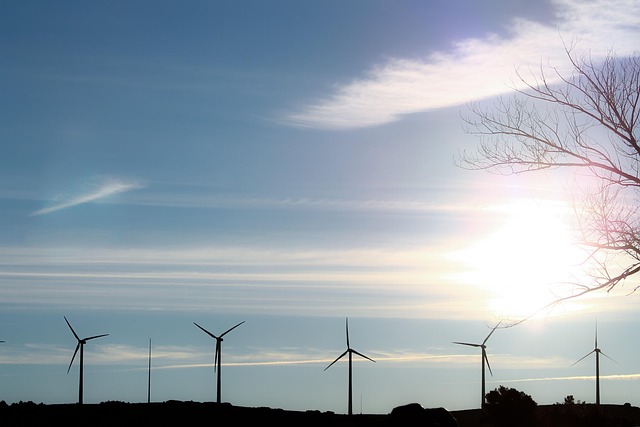Breaking Down Barriers: The Challenges Facing Wind Turbine Adoption
Wind energy has surged in popularity over the past few decades, emerging as a critical component in the global transition toward renewable energy sources. While the potential for wind turbines to create clean, sustainable energy is broadly recognized, numerous challenges continue to impede their wider adoption. This article explores the multifaceted barriers to wind turbine adoption, highlighting technological, economic, environmental, and social factors that influence the industry’s growth.
Technological Challenges
The technological landscape for wind energy has evolved significantly, but several hurdles remain. Innovations in turbine design and efficiency are ongoing; however, the technology must overcome specific challenges to achieve greater acceptance and deployment.
First, the efficiency of wind turbines is often limited by their dependence on geographic and climatic conditions. Wind turbines are most effective in areas with consistent, strong winds. Consequently, regions with less favorable wind conditions may face difficulties justifying the investment in installations. Investments in forecasting and turbine technology must address local wind patterns for broader acceptance.
Second, there are ongoing challenges related to turbine reliability and maintenance. While advances have been made in turbine durability, mechanical failures and downtime can still occur, leading to higher operational costs and decreased confidence from investors and energy companies. Improved predictive maintenance and analytics are needed to tackle these issues effectively.
Economic Barriers
The financial landscape of wind energy presents another significant challenge. Although the cost of wind power has decreased substantially over the years, initial capital investment remains a significant barrier for potential adopters.
Developing a wind farm requires a substantial upfront investment, which can be a deterrent for private investors and public entities alike. The absence of long-term financing mechanisms or incentives can exacerbate this issue, creating funding gaps that stymie development. Without support from government programs or subsidies, many projects may struggle to become financially viable.
The market for renewable energy credits and carbon trading also plays a crucial role in determining the attractiveness of wind projects. Market volatility can lead to uncertainty in revenue streams, making it difficult for developers to secure loans or attract investors. Additionally, the competition between different energy sources further complicates the landscape; when fossil fuels remain cheaper, renewable energy projects may struggle to compete.
Environmental Concerns
While wind energy is heralded for reducing greenhouse gas emissions, there are environmental concerns associated with wind turbine installations that can hinder their acceptance. One of the primary concerns is the potential impact on local wildlife. Bird and bat fatalities due to collisions with turbine blades have raised alarms among environmentalists and conservationists.
Moreover, concerns about habitat disruption arise when wind farms are installed in sensitive ecological areas. Each project location must be thoroughly evaluated to balance clean energy needs and ecological preservation. These assessments can prolong the development timeline, increasing costs and complicating the permitting process.
Wind energy is also sometimes criticized for its visual and auditory impacts on local communities. The perception of wind turbines as an eyesore or their noise during operation can lead to public resistance, significantly impacting the planning and approval processes for new projects.
Regulatory and Policy Challenges
The regulatory framework surrounding energy generation is often complex and can pose additional barriers to wind turbine adoption. In many regions, the permitting process for wind projects can be lengthy and fraught with bureaucratic red tape. This can discourage potential investors and developers due to uncertainties and extended timelines.
Moreover, inconsistent policies across different governments can create additional complexity. In some cases, policies may favor fossil fuels or create a fragmented market for renewable energy, making it challenging to establish a predictable regulatory environment for wind energy projects. Inconsistent or lack of government support can further complicate financing structures for wind energy investments.
Public Perception and Social Acceptance
Public acceptance is a crucial factor in the success of wind energy projects. Although awareness of climate change and renewable energy benefits has increased, opposition to wind farms still exists in various communities. This opposition can stem from a lack of understanding of wind energy technologies, socioeconomic factors, or disputes over land use.
Community benefits-sharing initiatives, wherein a portion of the wind farm revenues is allocated to local projects, have been proposed to foster goodwill and support. However, these initiatives must be effectively communicated and implemented to counteract resistance and mobilize public support for new developments.
Furthermore, the engagement process with local communities is critical. Developers need to proactively involve stakeholders from the outset, addressing concerns and providing transparent information to develop a better relationship with local residents. Failure to engage the public can lead to mistrust and ultimately halt a project before it begins.
Conclusion
The challenges facing wind turbine adoption are numerous and complex, encompassing a range of technological, economic, environmental, regulatory, and social barriers. Each challenge presents a unique set of obstacles to be overcome, and understanding these issues is crucial for stakeholders aiming to expand the wind energy landscape. As the world continues its pursuit of sustainable energy solutions, addressing these barriers through innovation, improved policy frameworks, and community engagement will be essential for unlocking the full potential of wind energy.
Collaboration among governments, industry leaders, and local communities will be pivotal to achieving this goal. By working together to dismantle obstacles and promote wind energy’s benefits, we can pave the way for a cleaner, more sustainable future powered by renewable energy.
